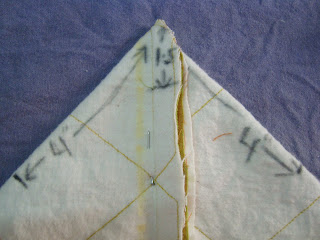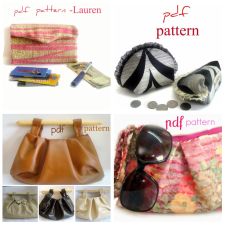I am pretty crafty you know,can sew,knit,crochet,make macrame stuff,embroider,paint,cook,bake.......................etc etc;)
I have a point dontcha worry:) I am not plain & simple bragging!
I realised I had never really tried my hand at bag making.....................that started my search for info on bag making & man...........was I hooked,cooked & booked!!!!!!!!!!!
I realized that probably I have stumbled upon the love of my life!!!
In the initial period I struggled with lots of basics .................so I thought about writing down a post or two about the essentials of bag making that you should know.I am pretty excited right now so that means that I am going to be chaotic & unorganized,so if I go wrong somewhere I am just a comment away from correcting it:)
OK so the first thing that confused me many times were the words very commonly used in most of the tutorials which felt like Greek to me!(No offense to anybody in Greece,just that I don't understand it:)
Selvedge- Ummmm.................OK you may laugh at how dumb I was,but I really didn't know what it meant so assuming there are people like me,this is what selvedge means.The selvage (US English) or selvedge (British English) is the term for the self-finished edges of fabric. The selvages keep the fabric from unraveling or fraying. So now you don't have to scratch your head when some tutorial says cut fabric from selvedge end;)
Grain of the fabric -Many patterns ask you to cut the fabric in a particular grain.Now what the hell is that!!!!! Fabric Grain decide the way fabric will hang and drape. There are three types of fabric grain.Lengthwise grain refers to the threads in fabric which run the length of the fabric, parallel to the selvedge of the fabric (Now you see why I started with selvedge:)). Crosswise grain are the threads that run perpendicular to the selvedge of the fabric or the cut edge of the fabric as it comes off the bolt. Bias grain is the thread line that is at a right angle to the lengthwise and crosswise grain of the fabric as it is on the bolt. The bias has stretch in woven fabric and will hang differently than a garment that has been cut on the straight or crosswise grain.
Types of fabrics -You can find different types of fabrics along with their description here.But naturally not all fabrics are suitable for purse making.Purses & bags turn out really well in thick & sturdy fabrics.I love brocades,leather,canvas,home furnishing fabrics.You can start a scavenger hunt in your own house,you will be surprised at how many things you can convert into purses!!! I have made purses out of pillow covers,skirts,place-mats & many more:) Most of the fabrics need some kind of stiffeners,which can be done by using interfacing.Now what in heaven;s sake is that!!!!!!!! OK OK I will skip the dramatics & tell you all bout interfacing:)
Interfacing -A material that is added between layers of fabric to add shape and stability to the garment is called interfacing in most basic terms.The two basic types of interfacing are sew-in and fusible. Fusible interfacing has a resin coating on the back which fuses to the fabric on applying heat or steam so naturally its much easier & faster. Sew in naturally needs to be sewn onto the fabric by machine.Choosing between a fusible or a sew-in interfacing is really a matter of personal preference. Fusibles provide slightly crisper results. However, some fabrics do not react well to fusible like metallic, beaded, sequined , rayon and velvets, most brocades, fake furs, leather, vinyl . Most patterns specify which type of interfacing to use so don't get hyper reading all this:) Here is a wonderful chart to help you further with types of interfacings.
Gusset -Basically gusset is a triangular or square inserted into the bottom corner seams to add breadth or reduce stress from everything a bag has to carry! The gusset can be straight or curved. Here's one I made in a purse.You can see the tutorial here.
Basting – It is a temporary method of holding two or more layers of fabric together by sewing by hand or machine with long stitches.It can also be used to make frills.
Seam Allowance – It is the narrow width between your seam line and the raw edge of the fabric. Seam allowances vary depending on where they occur & the pattern. Check for seam allowance before you cut the fabric according to any pattern.
Topstitching – Visible, decorative stitching done on the face side (outside) of the garment.
Well...........................enough for a day I guess:)
Next I am going to write about all the hardware needed.Lemme know if I missed something.







0 comments:
Post a Comment